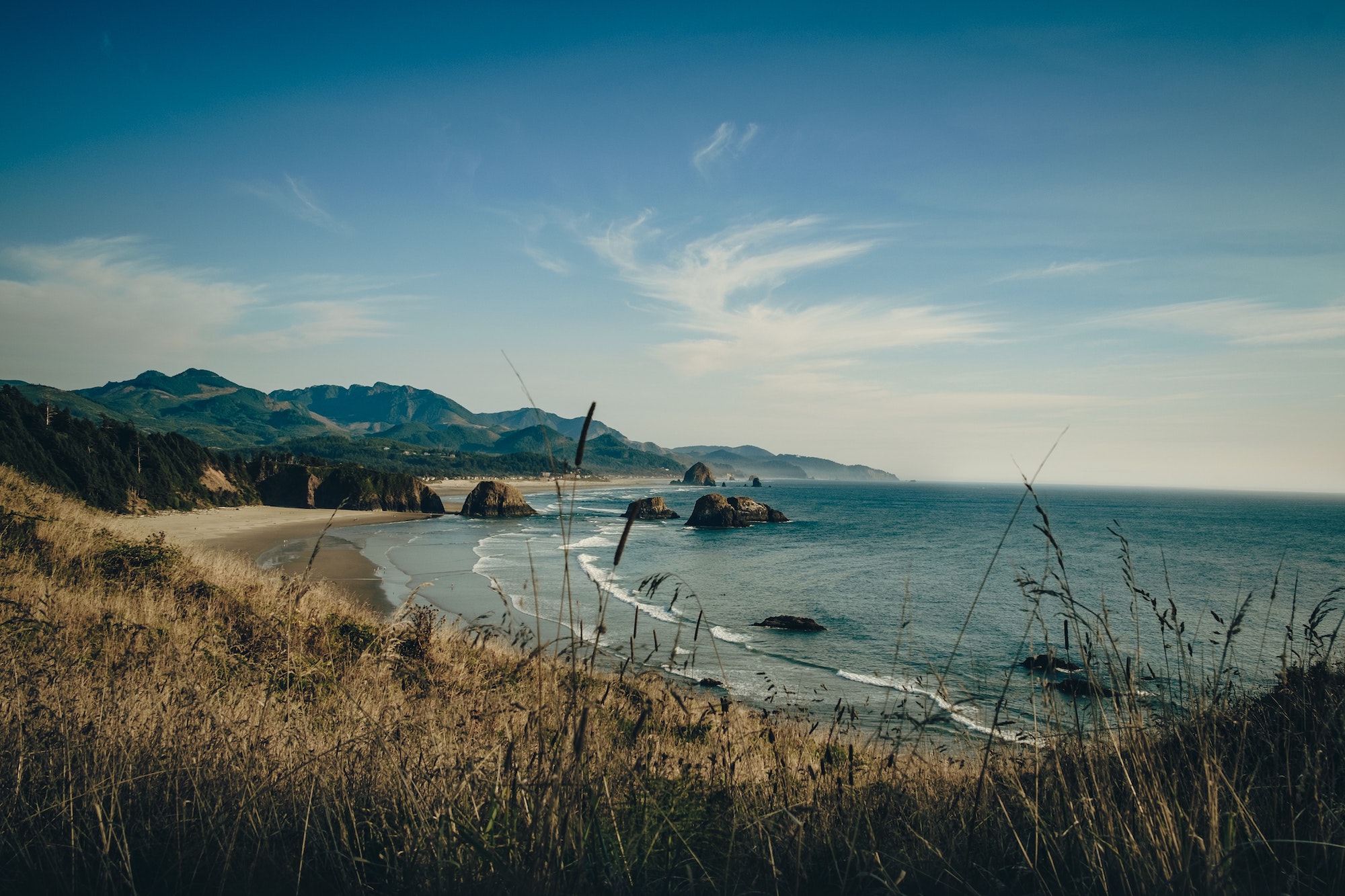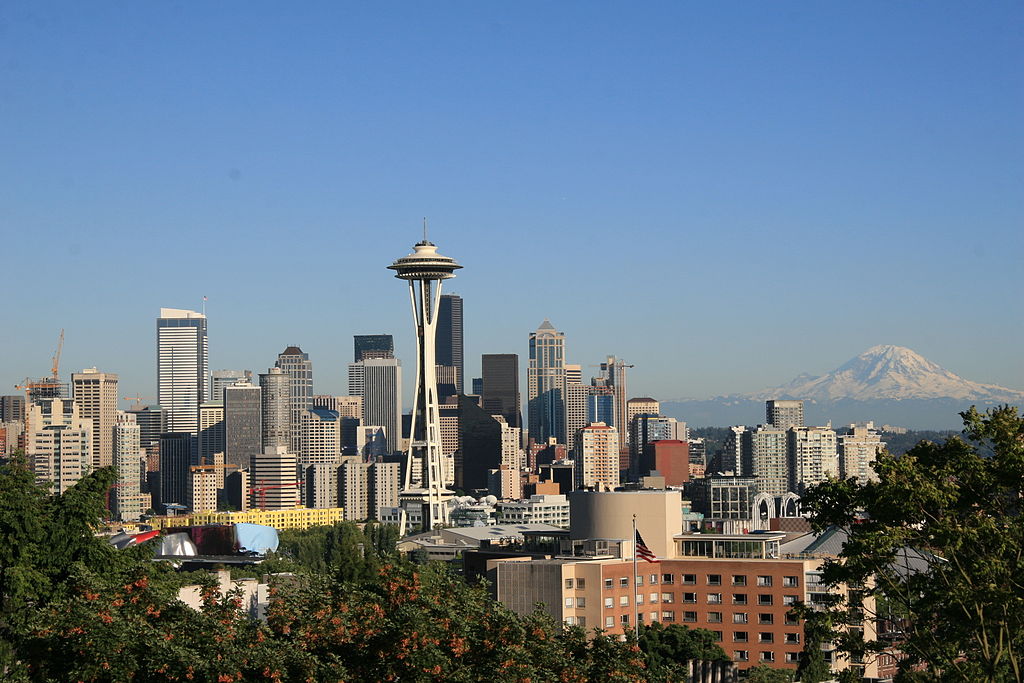Just 20 years ago, the discovery of “slow” earthquakes took the field of earthquake hazards by storm. Today, scientists are still hot on the trail for these sneaky quakes.
By Meghomita Das, Palomar Fellow (@meghomita)
Citation: Das, M., 2022, Slow earthquakes rumble through the Pacific Northwest, Temblor, http://doi.org/10.32858/temblor.265
The most notable earthquakes in history were abrupt, violent episodes of shaking that struck without warning. These, and all earthquakes, accommodate the slow-motion collision of Earth’s tectonic plates. They can destroy buildings and trigger tsunamis and leave little time for people to take cover.
Off the coast of the Pacific Northwest sits the intersection of the North American and Juan de Fuca tectonic plates. The subduction zone separating the plates dives deep below the U.S. and Canadian coasts, and earthquakes are an erratic visitor to the region. In 2001, this area experienced the magnitude-6.8 Nisqually earthquake, which was felt along the coast.
But deep beneath the Pacific Northwest, another special type of shock known as a “slow earthquake” periodically strikes. These events go unnoticed by all but sensitive ground motion detectors and leave behind no destruction in their wake — like silent whispers of an earthquake. These slow quakes play an important role in the earthquake cycle and unraveling their secrets is key to understanding future earthquake hazard in the region.

Quiet quakes discovered
Slow earthquakes have been observed around the world — from Japan to Mexico — at different depths and in different tectonic settings. They’re considered slow because, though they release the same amount of energy as a regular earthquake, it is released over many small, individual events that occur over the course of days to months, or even years.
These earthquakes were first discovered in Japan in 2001, when scientists noticed regularly repeating noise-like signals appearing as dense squiggles in seismic data. The scientists dubbed these signals “tremor.” Prior to this observation, tremor signals were often associated with volcanoes on the verge of eruption. However, the signals in Japan were located far from any volcano; they occurred in southwest Japan, within the subduction zone between the Philippine and Pacific tectonic plates.
Simultaneously, researchers on the other side of the Pacific observed similar tremor signals in their seismic stations between Seattle, Washington, and Victoria, British Columbia. These Cascadia tremors occurred every 13-16 months between 1997 and 2003 and were accompanied by slow, imperceptible ground motions, or ”slow slip.” Because tremor and slip occurred at a regular interval and featured both tremor and ground motion, the researchers dubbed this phenomenon episodic tremor and slow slip.
Understanding a slow earthquake
“[These quakes are] like eating crunchy peanut butter,” says Cailey Condit, a structural and metamorphic geologist at the University of Washington.
Regular earthquakes are like munching on a handful of peanuts. Pieces crack as your teeth bite down. Conversely, smooth peanut butter paste would be equivalent to the smooth motion of tectonic plates that glide past one another. Slow earthquakes are an in-between. Peanut chunks float in the smooth peanut butter paste that glides around in your mouth. The quiet movement of your teeth as you nosh on the paste is like the slip signal. When your teeth bite into to a peanut chunk, that crack you feel is equivalent to a tremor signal. Together the contrasting smooth and brittle textures create a signal that is like episodic tremor and slip.
One of the goals of Cailey’s research group is to unravel the cause of slow earthquakes.
“Before the discovery of slow earthquakes, scientists believed in a binary concept of earthquake hazard: earthquakes or no earthquakes. There was nothing in between” says Joan Gomberg, a geophysicist with the U.S. Geological Survey. “But realizing that slow earthquakes exist and also release energy like regular earthquakes is exciting and shows there is still a lot to learn.” The discovery led to collaborative efforts across different fields to understand their significance and broaden the field of earthquake science.
To find what causes slow earthquakes, scientists needed to understand their behavior. Slow earthquakes neither cause shaking nor damage buildings. They are not hazardous. But their sluggishness also means that they can hide in plain sight. Detecting one requires hyper-sensitive instrumentation — both on land and at sea. In certain parts of the world, such as Japan and Cascadia, they’re periodic, which allows scientists to anticipate their timing and monitor them.

Both the causes and repercussions of a slow slip event, such as whether it can trigger or dissipate a larger, abrupt earthquake, remain enigmatic. Within subduction zones, stress builds along the plate boundary as one plate is shoved below another. During a regular earthquake, such as the magnitude-9.1 Tohoku earthquake, that stress is released as slip occurs on that boundary, or on a nearby fault.
Because slow earthquakes also release stress, they could make a larger earthquake less likely — since stress doesn’t build up as much. On the other hand, stress released during a slow earthquake could transfer to a different part of the fault system and trigger a larger earthquake. But more research is needed for scientists to determine the role that these events have in the earthquake hazard in these regions.

“Since slow earthquakes occur regularly and contain many small events, [we have] this opportunity to closely study the mechanics behind them and use this knowledge to better understand the mechanics behind large earthquakes”, says Condit. As scientists seek to understand the enigma behind the slow earthquakes, we can observe their presence as they quietly rumble through the Pacific Northwest.
Meghomita Das is Temblor’s Palomar Fellow. She is a Ph.D. candidate at McGill University in Montreal, Canada, where she studies the signals of ancient earthquakes and slow slip events (www.meghomita.com). Palomar Holdings is sponsoring a science writing fellow to cover important earthquake news across the U.S.
- Earthquake science illuminates landslide behavior - June 13, 2025
- Destruction and Transformation: Lessons learned from the 2015 Gorkha, Nepal, earthquake - April 25, 2025
- Knock, knock, knocking on your door – the Julian earthquake in southern California issues reminder to be prepared - April 24, 2025

